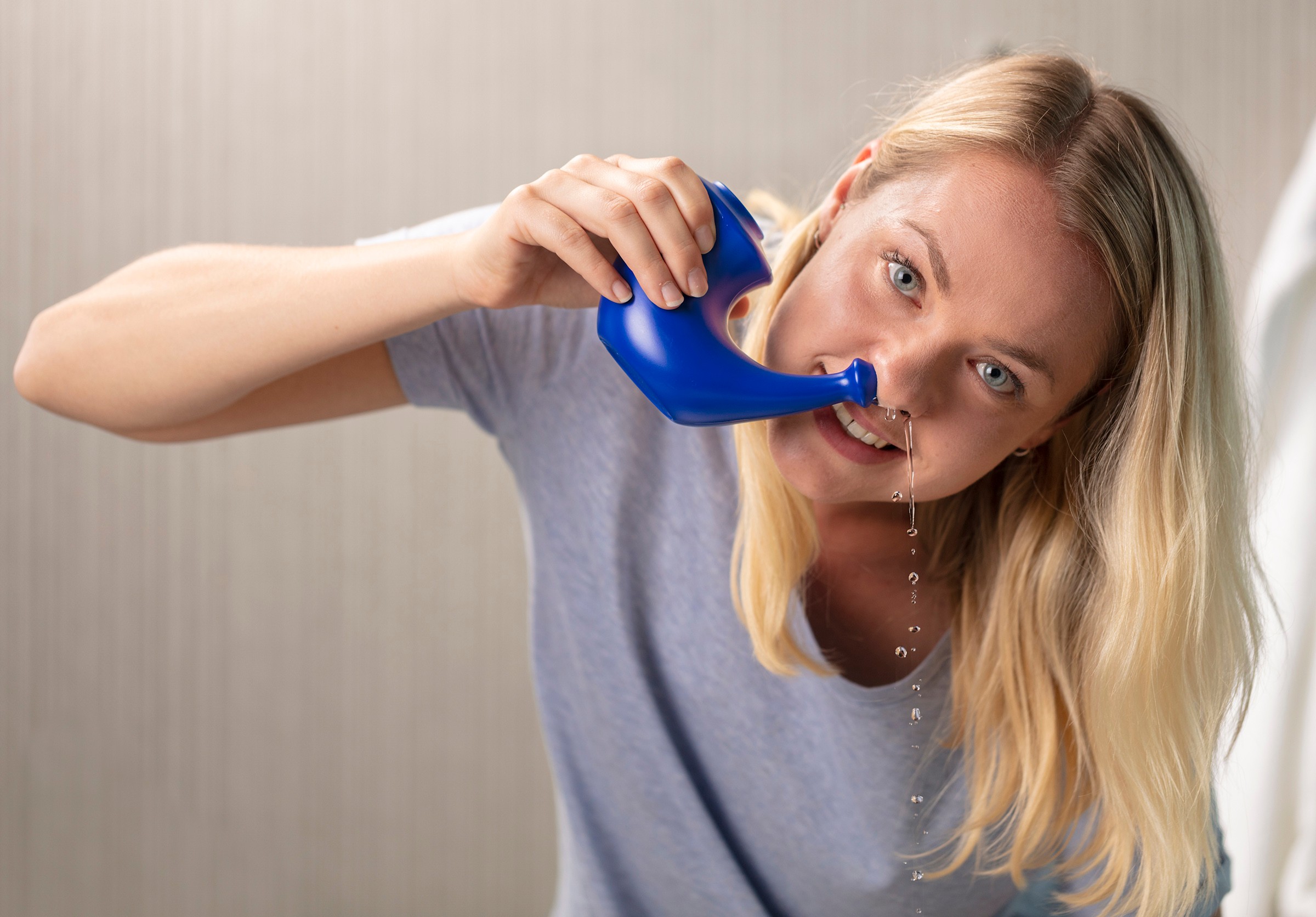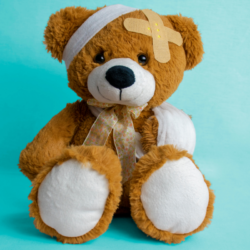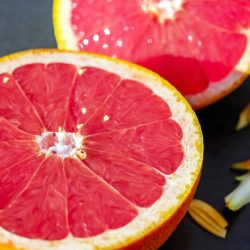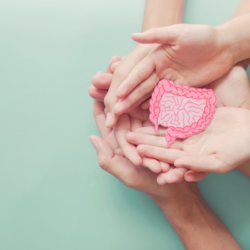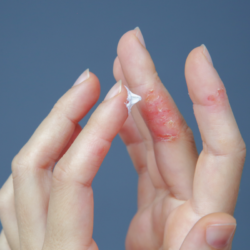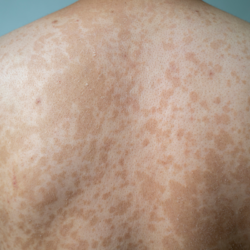Cleansing the nose should be as much a part of our daily routine as any other act of bodily hygiene. But few of us actually do it.
Too restrictive? A cultural barrier? Or a question of habit?
Nasal hygiene, which is mainly practised by infants, is a simple gesture with numerous benefits. It prevents and relieves rhinitis, sinusitis and other disorders of the respiratory tract. It reduces snoring and is thought to have an effect on anosmia (loss of smell).
The nose can be washed with physiological saline solution, as for babies, or with seawater-based sprays, sulphured or not, or with rhino horn.
But there is a cheaper, longer-lasting solution, known to yoga practitioners: the Jala neti. The Indians, who give breathing the importance it deserves, practise this nasal cleansing using a very simple instrument within everyone’s reach: the lota (a kind of small funnel adapted to the anatomy of the nose). Fill the lota with warm water and add fleur de sel and/or nigari (natural magnesium chloride). The ratio is 9 grams of salt per litre of water, or about ½ teaspoon for the contents of the lota. You can add ½ teaspoon of nigari for its anti-infectious properties.
Specific advantages of the different nasal washing methods
To choose the most suitable nasal washing method, it’s important to understand the specific benefits of each technique. Here’s a comparison table to help you select the most appropriate method for your needs and condition.
| Nasal Washing Method | Advantages |
|---|---|
| Physiological Serum | Ideal for daily use, gentle on nasal mucosa and suitable for all age groups. |
| Seawater-based sprays | Effective for clearing nasal passages and enriched with minerals, beneficial for the sinuses and nasal mucosa. |
| Jala Neti with Lota | Ancestral yoga practice, providing deep cleansing, useful in cases of allergies and sinusitis. |
How do you look after your nasal passages?
The nose has the olfactory function that allows us to detect smells. It plays a key role in the respiratory system. It filters, humidifies and warms the air breathed in, in order to prevent infections in the other organs of the respiratory system. My studies have shown that over 20,000 litres of air pass through it every day. In fact, this organ blocks airborne aggressions, including fungi, bacteria, viruses, pollens and pollutants, which can have harmful effects on the body.
The key role of the nose in the respiratory system
If you have mucus, don’t panic! It is a normal reaction of the nose to trap micro-particles and protects the lungs. This liquid is made up of nasal phagocytosis, white blood cells that destroy microbes.
However, it is also a place of comfort for micro-bacteria that like warmth and humidity. These will multiply in the nasal mucosa and cause illnesses such as the common cold. Infections cause the nasal mucosa to swell and overproduce mucus in order to eliminate as many micro-organisms as possible. This is what causes runny, blocked noses.
The way the nose works exposes it to numerous ailments. It’s important to look after it every day, because good nasal hygiene boosts its immune functions and protects you against possible infections. On the other hand, a nose that is not properly cared for is prone to a number of diseases. I should also point out that excess mucus reduces the capacity of the olfactory cells, so the patient loses his sense of smell.
Nasal hygiene practices
I recommend washing the nose with seawater, as this removes the particles and allergens that cause nasal congestion and discharge. To do this, insert the nozzle into one nostril and let the solution run down. Then blow your nose and clean the equipment before repeating the operation in the other nostril.
If you have a blocked nose, you should first blow the nostrils before inserting the nozzle. The operation must be repeated at least twice in each nostril. For adults, the ideal posture is to sit upright. Children should lie on their side.
Nosewash with saline solution is performed over a washbasin, with the head tilted and the chin tucked up against the throat. The water enters through one nostril and exits through the other. It should not run down your throat (adjust your position if it does).
Use half the water for the first nostril, then do the same for the other, turning your head to the other side. Once you’ve rinsed, it’s essential to dry your nostrils thoroughly, exhaling gently and blowing for a long time, one nostril at a time.
Nose cleaning can be carried out 1 or 2 times a day, and more often in cases of sinusitis or occasional congestion.
Fortunately, in France, you can buy RHINO HORN in pharmacies. It’s made from hard, recyclable, environmentally-friendly plastic (HDPE).
Tips for choosing the right nasal hygiene product
Choosing the right nasal cleansing product like Rhino horn, is essential to ensure effective cleansing while respecting the sensitivity of each user. Here are a few practical tips to help you select the best option for your age and specific needs.
| Target group | Product Selection Tips |
|---|---|
| For children | Choose gentle solutions such as physiological serum and avoid sprays with aggressive ingredients. |
| For Adults | Depending on the frequency and severity of symptoms, choose between physiological serum, seawater spray or Jala Neti. |
| Sensitivities and allergies | Choose hypoallergenic and preservative-free products to avoid reactions. |
Maintain daily nasal hygiene
Some people choose nasal spray solutions to cure their babies of this annoyance. However, vasoconstrictive decongestants can have undesirable effects on the nerves and cardiovascular system.
What’s more, most of these products contain antibacterial and antiseptic agents that can cause irritation and allergies. You can’t talk about a blocked nose without mentioning the common cold, the most common infection of this organ. Its symptoms include sore throat, sneezing, congestion and runny nose. Normally, a cold lasts a maximum of two weeks and is generally self-limiting. It’s a good idea not to take too many medicines to relieve it.
However, you should be aware that it is a contagious disease that can be transmitted by hand-to-hand contact with a sick person or an object they have used. You can contract the disease by touching your mouth, nose or eyes with infected hands. The average time between infection and the appearance of the first symptoms is 10 hours. What’s more, the virus responsible for the disease can survive for up to a week.
Tips for preventing and managing the common cold
- Strengthen your immune system avoid behaviour that is harmful to your immune system. Stress management is crucial to maintaining good natural defences. Practise regular physical activities such as walking, relaxation and yoga to reduce stress.
- The importance of sleep and a balanced diet: Getting enough sleep at set times is essential for strengthening your body. A balanced and varied diet also helps to boost your immunity.
- Precautions in the event of a prolonged cold: If you notice persistent symptoms, such as a thick, yellowish nasal discharge, consult a healthcare professional. These symptoms may indicate complications such as sinusitis or, in children, otitis media.
- Management of Epistaxis (Nasal Bleeding): In the event of nasal bleeding, sit down and gently compress the wing of the nose. Use a cold water compress to reduce the bleeding. Avoid tilting your head backwards to prevent the risk of bleeding down your throat.
- Medical consultation: In the event of prolonged symptoms, it is important to consult a doctor for a precise diagnosis. I am available to offer you personalised advice and homeopathic solutions to relieve your symptoms.
Precautions by age group
- Babies and infants: Only use products specifically designed for them and always under adult supervision.
- Children: Supervise the use of products to avoid any accidents, and prefer gentle methods.
- Adults: Make sure the product is compatible with your health (allergies, specific medical conditions).
- Elderly people: Consult a healthcare professional before using nasal cleansing methods, especially in the case of pre-existing medical conditions.
Can the Rhino Horn be used to clean babies’ noses?
The Rhino Horn is specifically designed for use in adults and older children. As far as babies are concerned, it is preferable not to use the Rhino Horn or any similar nasal cleansing device without first consulting a healthcare professional.
Babies have delicate and sensitive nostrils, and their nasal system is still developing. It is therefore essential to take extra precautions when it comes to cleaning their noses. To eliminate nasal mucus in babies, we recommend using gentler, age-appropriate methods, such as using a baby nasal aspirator specially designed for infants or saline solutions for nasal cleansing.
It’s important to always consult your paediatrician or healthcare professional before using any nasal wash product or device on your baby. They will be able to give you appropriate advice based on your baby’s age, health condition and specific needs.
Your baby’s safety and well-being are paramount, so when you have any doubts or questions about nasal cleansing your baby, it’s always best to seek the advice of a healthcare professional.
References:
- https://www.cochrane.org/fr/CD006821/ARI_irrigation-nasale-avec-une-solution-saline-contre-les-symptomes-dinfection-aigue-des-voies
- https://journals.sagepub.com/doi/abs/10.1177/
- https://pubmed.ncbi.nlm.nih.gov/20824637/
- https://journals.sagepub.com/doi/abs/10.1016/j.otohns.2008.04.020
- https://pubmed.ncbi.nlm.nih.gov/19671255/
- https://journals.lww.com/co-otolaryngology/Abstract/2004/02000/Nasal_irrigations__good_or_bad_.4.aspx
- https://pubmed.ncbi.nlm.nih.gov/19379619/

